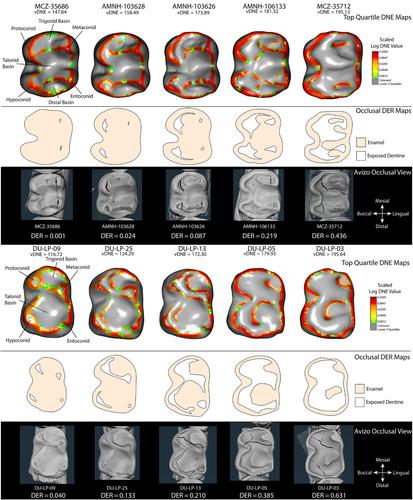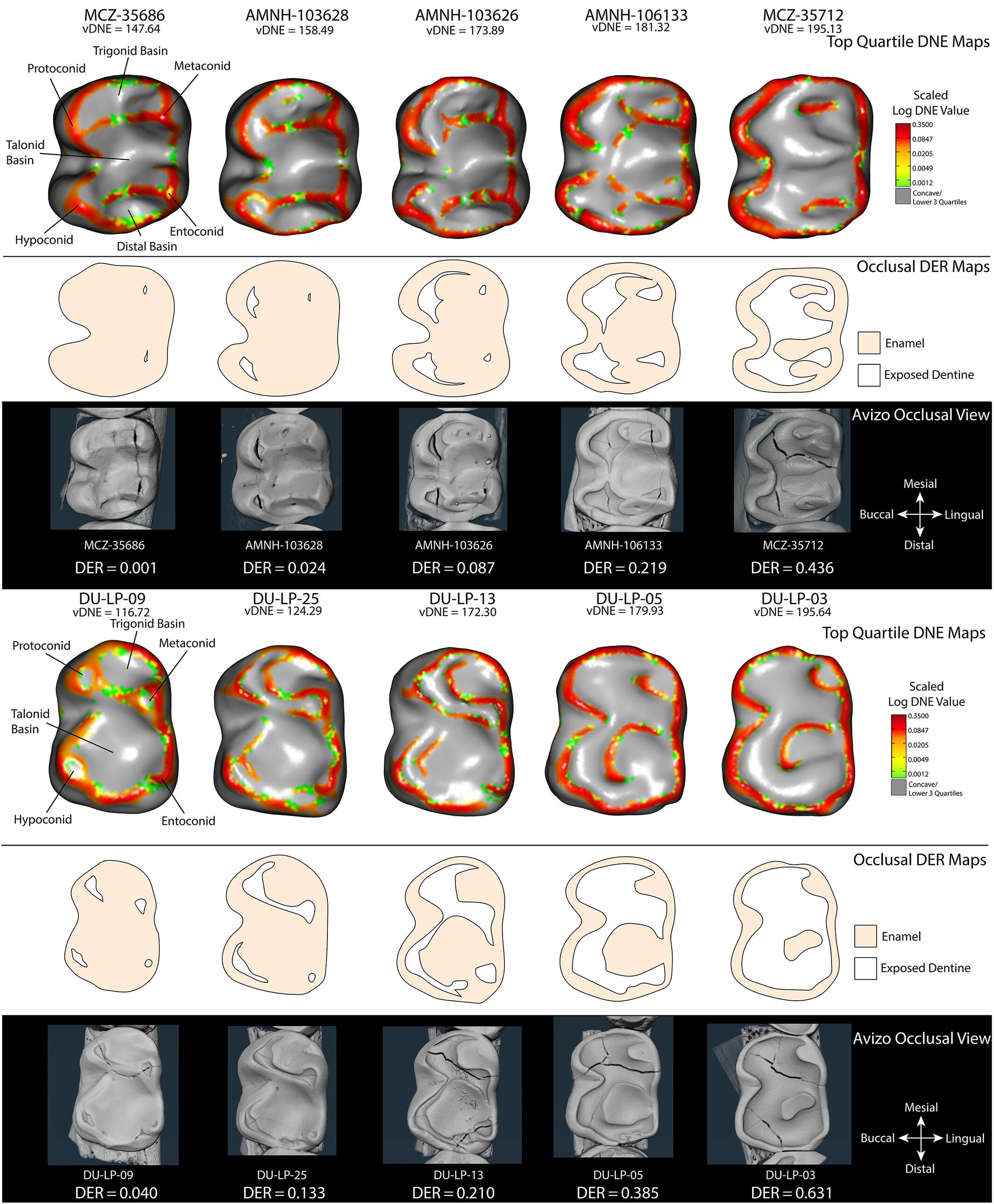Dental sculpting and compensatory shearing crests demonstrated in a WEAR series of Presbytis rubicunda (Cercopithecoidea, Colobidae) with dental topography analysis
Abstract
Objectives
Maintaining effective and efficient occlusal morphology presents adaptive challenges for mammals, particularly because mastication produces interactions with foods and other materials that alters the geometry of occlusal surfaces through macrowear and/or catastrophic failure (i.e. “chipping”). Altered occlusal morphologies are often less effective for masticating materials of given diet—but not always—some species exhibit dental sculpting, meaning their dentitions are set up to harness macrowear to hone their occlusal surfaces into more effective morphologies (i.e. secondary morphologies). Here we show that dental sculpting is present in the folivorous Presbytis rubicunda of Borneo.
Methods
Thirty-one undamaged lower second molars of P. rubicunda exhibiting various stages of macroscopic wear were micro-CT scanned and processed into digital surfaces. The surfaces were measured for convex Dirichlet normal energy (vDNE, a measure of surface sharpness), and degree of surface wear. Regression analyses compared surface sharpness with several measures of wear to test for the presence and magnitude of dental sculpting.
Results
Positive correlations between the wear proxies and vDNE reveal that P. rubicunda wear in such a way as to become sharper, and therefore more effective chewing surfaces by exposing enamel-dentine junctions on their occlusal surfaces and then honing these junctions into sharpened edges. Compared to another primate folivore in which increasing surface sharpness with macrowear has been demonstrated (i.e., Alouatta palliata), the worn surfaces are similarly sharp, but the dental sculpting process appears to be different.
Discussion
The results presented here suggest that not only do some primates exhibit dental sculpting and the attendant secondary morphology, but that there appear to be multiple different morphological configurations that can achieve this result. P. rubicunda has thicker enamel and a more stereotyped wear pattern than A. palliata, although both show positive correlations of occlusal surface sharpness (vDNE) with various wear proxies. These findings shed light on the varied approaches for the maintenance of effective and efficient occlusal surfaces in primates.



 求助内容:
求助内容: 应助结果提醒方式:
应助结果提醒方式:


